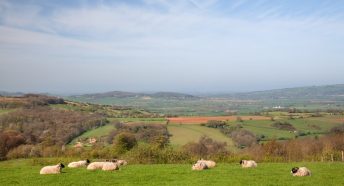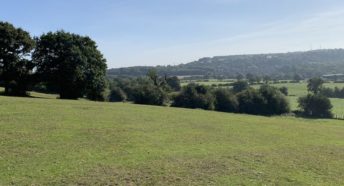Green Belt at risk from flawed Birmingham Council Housing Consultation
Countryside Campaigners say the Green Belt is at risk following a flawed Birmingham Council Consultation which should have offered the public genuine alternatives to simply reproducing inflated Government figures which exaggerate the shortfall of housing in the city.
In their response to the consultation on ‘Options and Issues’ for the new Birmingham Plan, they will say the consultation was flawed because it did not include options for more realistic housing needs.
The Council claims it needs to build 7,136 homes every year for the next twenty years, based on the Government’s Standard Formula1.
However, that is 3 times the most up to date measure of genuine housing need (2,388 homes each year) and, even before the Plan begins, includes 29,646 households which simply do not exist according to the recent (2021) Census2.
This includes the Council inflating the numbers by 35% increase just to meet the Government’s political housing target, a bolt-on which other city councils, such as Bristol, are openly challenging3.
Even Birmingham’s own consultants have told them there is a case for lower numbers4.
At the same time, CPRE say Birmingham has failed to adequately account for the number of new homes on brownfield sites.
Despite consistently building 1500 of these so called ‘windfall homes’ a year, they have only included 600 in their calculations, drastically underestimating the likely level of actual new housebuilding over the next twenty years5.
CPRE’s own research suggests that the claim that Birmingham needs to fill a shortfall of 78,415 houses is deeply flawed and that the true shortfall could be much lower and may not actually exist at all6.
And CPRE warn that the effect of these bloated housing figures would not be to deliver much needed affordable housing in the city but could allow a boom in expensive Green Belt housing on the edge of Birmingham where homes would be less accessible to hospitals, schools and shops, and where people would be more likely to rely on cars and add to carbon emissions.
Peter King (Vice-Chair of WM CPRE) said: ‘We are deeply concerned that Birmingham Council has presented the Government’s housing targets as if they were on tablets of stone. They have asked people to consider options for housing in the city but effectively tied their hands behind their backs. It’s clear there are, and will be, many more brownfield sites that can meet genuine housing need in the city where it is needed.’
CPRE is now calling on the Council to reconsult on whether a lower level of housing would be more sustainable, in line with up-to-date evidence, and give people a genuine choice.
End
Contacts
Peter King, Vice-Chair, WM CPRE, 01562 720368
Gerald Kells, Technical Advisor, 01922 636601
Notes
1. Table comparing Standard Methodology results for Birmingham with ONS demographic projections.
| Birmingham (Dwellings per Annum) | 10 Year Household Average 2022-2032 | Affordability Adjustment (based on 2021 figure of 6.49) | Affordability Adjusted Figure | Standard Methodology Result, including 35% uplift |
| ONS 2014 | 4,574 | 712 | 5,286 | 7,136 |
| ONS 2016 | 3,337 | 519 | 3,856 | 5,206 |
| ONS 2018 | 2,388 | 372 | 2,760 | 3,726 |
2. Table comparing ONS Projections for Households in Birmingham in 2021 with Interim Census results
| Birmingham | 2021 Census Households | Projections for year 2021 in ONS SNPPs and SNHPs | Difference between ONS projections for 2021 and Census 2021 | Difference as % of Census |
| 2014ONS | 423,500 | 453,146 | 29,646 | 7.00% |
| 2016ONS | 423,500 | 430,909 | 7,409 | 1.75% |
| 2018ONS | 423,500 | 426,334 | 2,834 | 0.67% |
3. The Government Planning Statement of 16 Dec 2020 added 35% more housing to the need in the 20 largest cities/towns in England including Birmingham with the aim of making the Standard Methodology of housing calculation meet the 300,000 house per annum across England. The statement says it should come from brownfield sites, but is at the moment simply being added to the ‘unmet need’ in Birmingham.
4. Birmingham Council, Housing and Economic Development Needs Assessment (HEDNA, ICENI, April 2022, Executive Summary para 1.26 and paras 6.86-6.87
5. See Table A5.2, Windfall Sites Completed, Birmingham Council, Strategic Housing and Economic Land Availability Assessment, October 2022
6. Submitted to Birmingham Council as part of WM CPRE’s response to the Options and Issues Consultation on a revised Birmingham Plan







